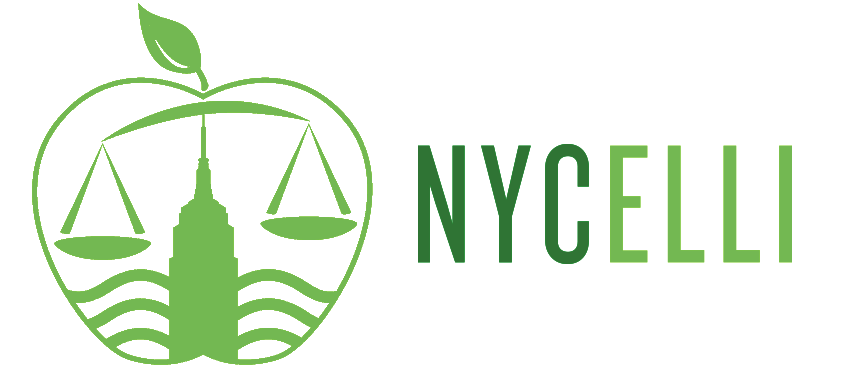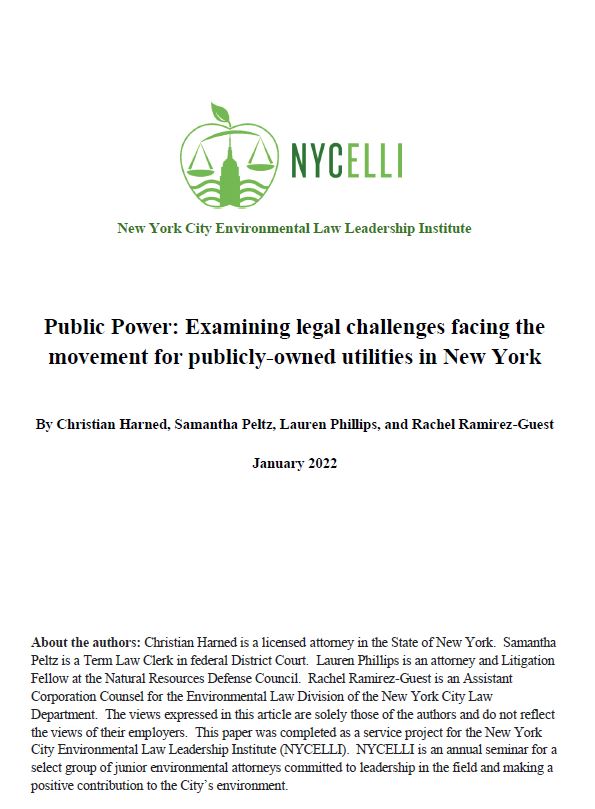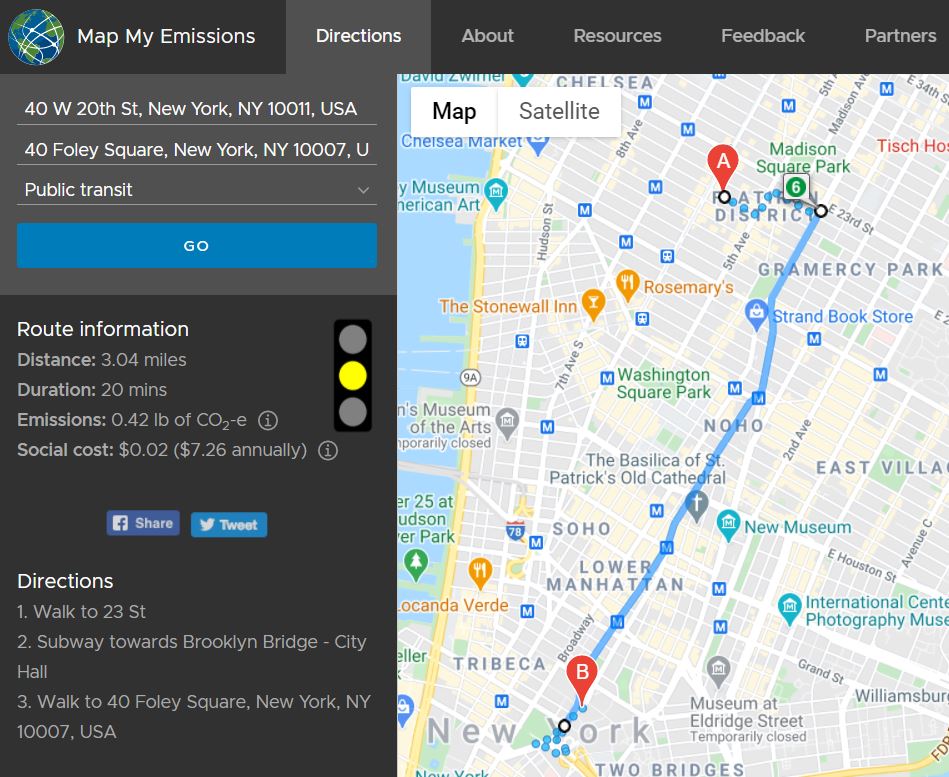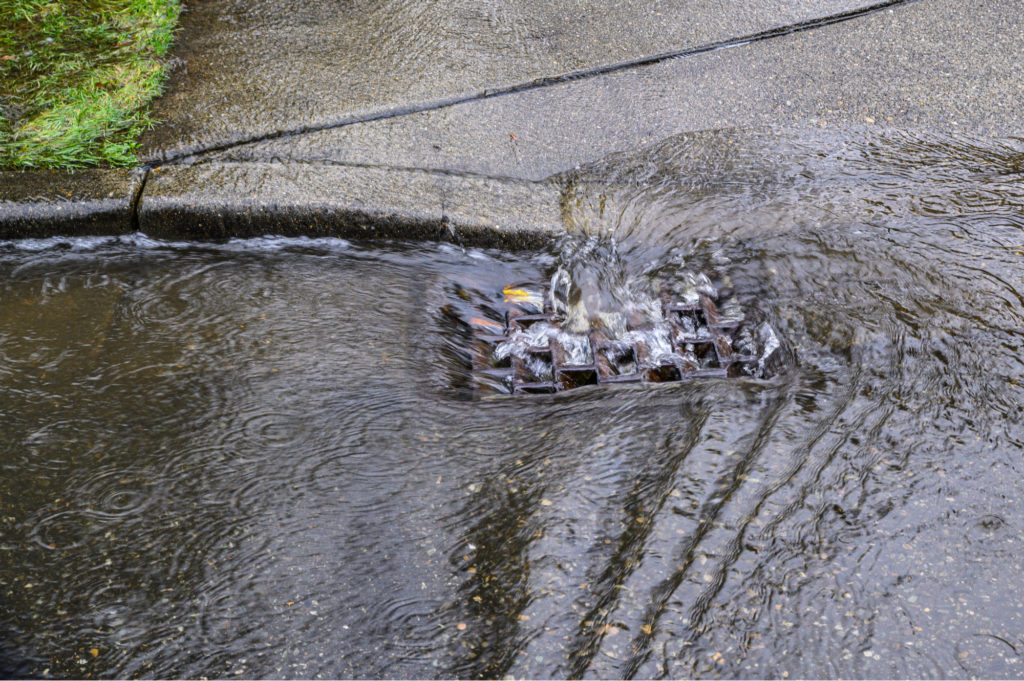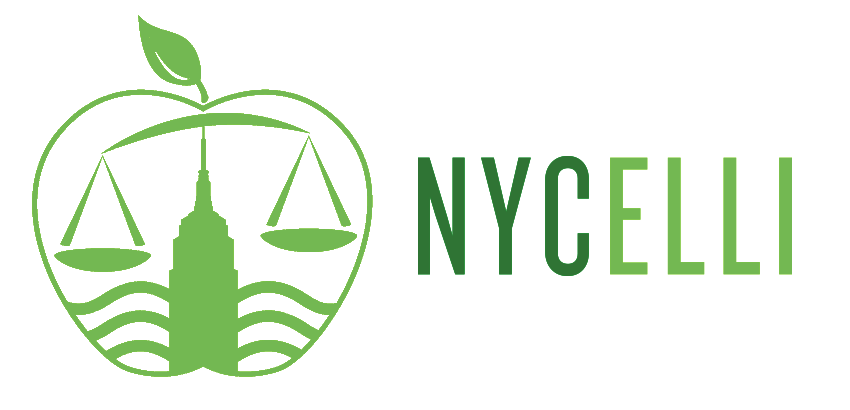Public Power: Examining legal challenges facing the movement for publicly-owned utilities in New York
By Christian Harned, Samantha Peltz, Lauren Phillips, and Rachel Ramirez-Guest
Across New York, there is a growing “Public Power” movement to replace New York’s current system of privately-held utilities with publicly-owned utilities. Citing climate change and equity concerns, Public Power advocates argue that the current model for electricity delivery has failed everyday New Yorkers. Instead, advocates have proposed two bills—NY Build Public Renewables Act and the New York Utility Democracy Act—to bring private utilities under state ownership. This whitepaper examines the movement’s motivations, proposed legislation, and notable legal challenges a public takeover of privately held utilities might present in New York.
In addition to writing a white paper, the group assembled a diverse panel to discuss legal and policy considerations stemming from the Public Power proposal. The speakers included Jay Wu, a strategy coordinator for Public Power New York, Shelley Welton, a legal scholar who examines how climate change is transforming energy and environmental law and governance, Radina Valova, Vice President of the Interstate Renewable Energy Council’s Regulatory Program, and Justin Gundlach, senior attorney at the Institute for Policy Integrity.
You can watch the Public Power panel event, co-sponsored by the Sabin Center and NYCELLI, HERE.
Map My Emissions Website
The Map My Emissions website — www.mapmyemissions.com — was created by three students in the NYCELLI 2017 class. The website shows the environmental impacts of different modes of transportation in New York City for individual transit destinations. The website calculates the carbon emissions associated with your trip and shows an estimate of the costs those emissions impose on society. It also tells you how this would change if you selected a different mode of transport. The hope is that, as awareness of these impacts increases, New Yorkers will be better placed to make more sustainable transportation decisions.
NYC Stormwater Fee Article
Members of the NYCELLI 2011 class published an an article in the January 2014 edition of the Environmental Law in New York newsletter (“A Stormwater Fee, With Strong and Equitable Credits for Green Infrastructure, Could Benefit New York City as a Whole and Environmental Justice Communities Such as the South Bronx”) evaluating the need for and the possibility of a stormwater fee in New York City.
The article evaluated how strong and equitable incentives for green infrastructure, via credits to the fee for the installation and maintenance of stormwater capture efforts (e.g., bioswales/rain gardens, rain barrels, green/blue roofs, permeable pavers, etc.) could ensure improve the environmental health of the city and ensure that environmental justice communities benefit as well as more affluent parts of the city. A stormwater fee would incentivize green infrastructure on both private and public property, reaching a much larger percentage of property in the city than any other city effort. A stormwater fee, if effective and equitable incentives for green infrastructure are included, can ensure that green infrastructure is equitably distributed throughout the city, and could potentially alleviate the limited amounts of green space, higher than average unemployment rates, and higher than average adverse health impacts, such as asthma, in environmental justice communities.
The article included a review of other cities’ stormwater fee programs and the different options for credits for green infrastructure, how environmental justice communities might benefit from increased green infrastructure, NYC’s existing green infrastructure programs, and the legal framework for a stormwater fee in NYC, among other topics.
Green Jobs Bill
Lawyers for Green Jobs (L4GJ) was created by five NYCELLI students in 2009 in response to New York’s lack of a coordinated, systematic approach to green job training and education statewide. After reaching out to many stakeholders in this area, including Green for All, the Blue-Green Alliance, Sustainable South Bronx, the Working Families Party and other groups, and having listened to their ideas and suggestions, L4GJ determined that the best approach would be to draft a bill that would coordinate green jobs training and education statewide.
Thus, L4GJ drafted such bill which was introduced in both the Assembly and the Senate (A8377/S5640) in 2010. Specifically, the bill created a Green Jobs Subcommittee within the New York State Workforce Investment Board. The Green Jobs Subcommittee was mandated to oversee four tasks: perform a labor market and industry data analysis, make targeted recommendations to develop education and job training programs, assist local governments in creating local green jobs corps to spur job training and education throughout the state, and explore funding mechanisms through a mix of public and private resources.
The group lobbied for the bill in Albany on several occasions, including meeting with members of the Environmental Conservation Committee, where the bill was being considered, and speaking at a Small Business Committee hearing concerning fostering green jobs in New York state. The bill passed both houses nearly unanimously but unfortunately was vetoed by Governor Cuomo, who thought (incorrectly) that the bill was unnecessary given that this work was currently being carried out by the State Department of Labor.
